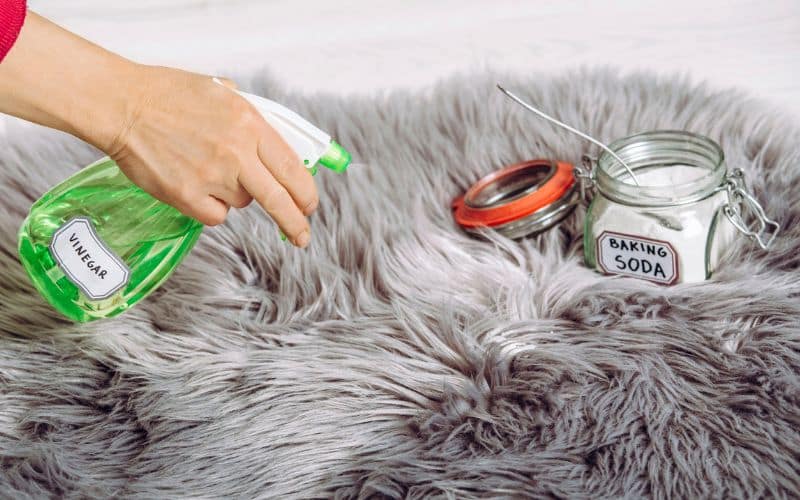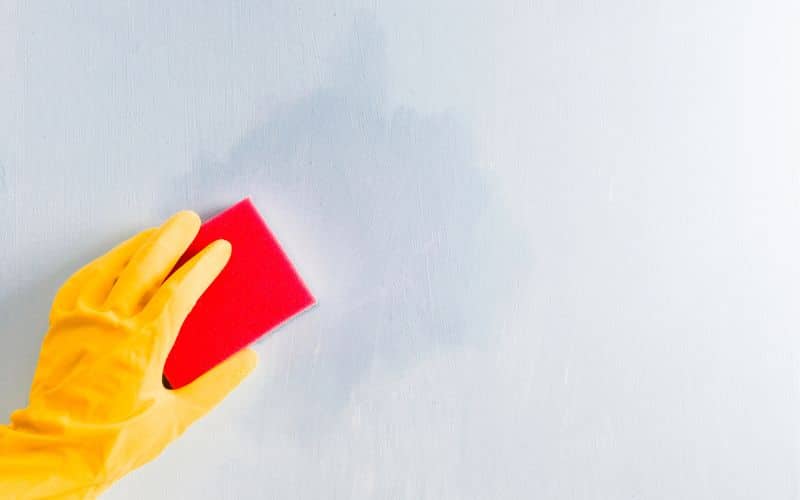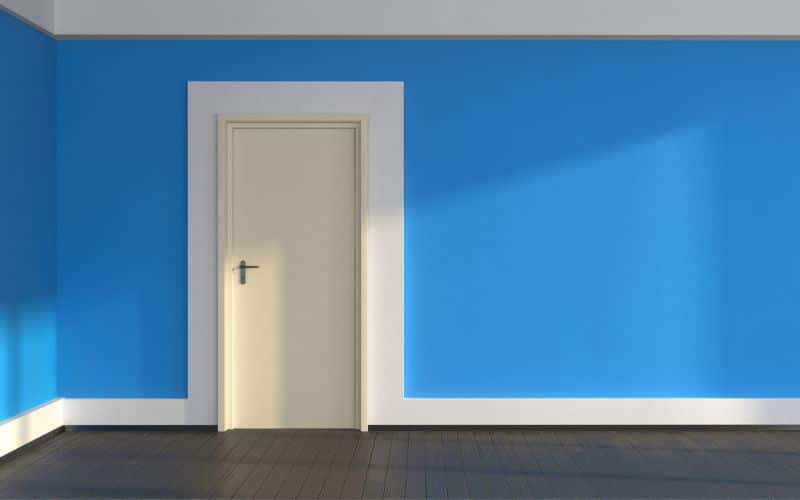When you’re faced with grubby fingerprints or a mysterious smudge on your painted walls, the fear of damage can make you hesitate. But there’s no need to live with those unsightly marks. With the right approach, you can get your walls back to pristine condition without stripping away any of that precious paint.
You’ll discover how to tackle different types of stains and learn the best techniques for a gentle yet effective clean. From choosing the right cleaning solutions to mastering the art of spot-cleaning, we’ve got your walls—and your worries—covered. Keep reading to learn the secrets to keeping your painted walls spotless without compromising their finish.
Table of Contents
ToggleTypes of Stains on Painted Walls
When maintaining the immaculate appearance of your painted walls, understanding the types of stains you’re dealing with is crucial. Different stains require distinct cleaning approaches for effective removal without damaging the paint.
Common Stains and Their Characteristics
Fingerprints and Smudges: These are likely the most frequent stains, often left behind by children or during day-to-day activities. They’re typically oily in nature, so a detergent-based cleaner may be needed.
Dust and Dirt Build-up: Accumulated over time, these stains can give walls a dull, grimy look. A soft, damp cloth often does the trick for these particulate deposits.
Food and Beverage Splatters: In kitchens and dining areas, splashes from sauces, drinks, and oily substances are common. Such stains may require a gentle, yet effective cleaner to avoid paint damage.
Crayon Marks: A nightmare for parents, crayons can leave waxy, colourful marks. Specific solvents can lift these without affecting the underlying paintwork.
Mould and Mildew: Typically found in bathrooms and damp areas, these stains not only look unsightly but can also be harmful to health. A cleaning solution with mildewcide can be beneficial for treatment.
Stain Removal Techniques
Identifying the type of stain helps you select the right cleaning technique. A non-abrasive approach is always best, starting with the gentlest cleaning solutions. Always test-clean a small, inconspicuous area first to ensure no damage will occur to your wall’s finish. Remember to tackle stains as soon as they appear; the longer they sit, the more stubborn they become.
For oil-based stains, consider using a mild degreaser. For water-based stains, a simple solution of water and mild dish soap often suffices. In the case of more persistent stains, you might need a specialised wall cleaner that’s designed to break down the tougher substances without stripping away the paint.
Armed with this knowledge, you’ll be better equipped to handle the various challenges that come with keeping your painted walls clean and pristine.

Choosing the Right Cleaning Solutions
When tackling stains on your painted walls, it’s crucial to select the proper cleaning solutions that effectively lift stains without compromising your paint’s finish. Here’s what you need to consider:
Water and Soap: The gentlest option is plain water and a touch of dish soap. This solution is perfect for most light to moderate stains, especially when used with a soft sponge or cloth.
Vinegar Solution: For a bit more cleaning power, mix equal parts water and white vinegar. This natural cleaner is particularly good for cutting through grease and eliminating odours.
Baking Soda Paste: On tougher stains, a baking soda paste (just baking soda mixed with water) acts as a mild abrasive to scrub away marks without scratching your paint.
Remember, the key is to start with the mildest solution possible and only escalate if necessary. Always test your chosen cleaner on an inconspicuous area to ensure it doesn’t damage the finish. Rotate through the following steps for the best results:
Wipe away loose debris with a dry cloth.
Apply your cleaning solution with a soft sponge, working in gentle, circular motions.
Rinse the area with clear water to remove any cleaning residue.
Dry the wall with a soft towel to prevent watermarks.
Keep in mind that flat or matte finishes are more vulnerable and might not react well to harsher cleaners like bleach or ammonia. For these types of paint, sticking to water and soap is often your safest bet. With the right approach and care, you’ll find your walls can look spotless once more while the paint remains vibrant and intact.
Preparing the Wall for Cleaning
Before you embark on the task of removing stains from your painted walls, proper preparation is crucial to ensure you don’t end up with a bigger mess than the one you started with. Start by moving furniture away and laying down drop cloths or old towels to protect your floors from any drips or spills.
Dusting the Wall Surface
Believe it or not, walls gather dust, and this can interfere with your cleaning efforts. You’ll need to wipe down the walls with a dry microfiber cloth to remove loose dust particles. This allows the cleaning solution to work directly on the stains.
Identifying the Type of Paint
Different paint finishes react differently to cleaning agents. Check whether your paint is flat, eggshell, satin, semi-gloss, or high-gloss; the latter three can generally withstand more vigorous cleaning.
Testing Cleaning Solutions
Always test your chosen cleaning solution on a small, inconspicuous area first. Wait for it to dry to ensure no damage or discoloration occurs. If the paint looks unchanged, you’re good to proceed.
Tools and Solutions
Gather your tools—buckets, sponges, and gentle, non-abrasive cleaners. For tougher stains, you might need a mild degreaser or baking soda but avoid any harsh chemicals that can strip away the paint.
By preparing your walls and tools effectively, you’ll set yourself up for successful cleaning that leaves your painted walls fresh and bright without compromising the integrity of the paint.
Techniques for Gentle Wall Cleaning
Before diving into cleaning, remember the mantra: less is more. You’re not just cleaning the wall; you’re preserving its finish.
Start With the Simplest Solution
Often, a soft sponge, warm water, and a bit of elbow grease will do. If it’s a water-based paint:
Use a damp sponge to gently rub the surface
Rinse the sponge frequently to avoid spreading the grime
Upgrade to Mild Detergent for Stubborn Stains
If water alone doesn’t cut it, mix a small amount of mild dish soap with water:
Apply the mixture with a soft cloth
Work in a circular motion from the outside of the stain inward
Employ Baking Soda for Tough Challenges
Baking soda has natural abrasive qualities but is gentle enough for painted walls:
Create a paste with baking soda and water
Gently apply with a cloth
Rinse with a clean, damp cloth to avoid residue
Remember to always test these methods in an inconspicuous area first. Each wall is unique and may react differently to cleaning techniques. With persistent care, you’ll maintain your wall’s structural integrity and visual appeal.

Spot Cleaning vs. Full Wall Cleaning
When maintaining the cleanliness of your painted walls, understanding the difference between spot cleaning and full wall cleaning is crucial. Spot cleaning targets specific areas where marks or stains are visible, while full wall cleaning involves washing the entire wall surface.
Spot Cleaning for Quick Fixes
Spot cleaning is your go-to method for immediate intervention after a stain occurs. It prevents the stain from setting in and spreading. Remember to:
Dab at the stain rather than scrub to avoid paint damage
Use a gentle cleaning solution and a soft cloth
Address the spill promptly for best results
Spot cleaning is less time-consuming and focuses on preserving the wall’s integrity without the need for an extensive clean-up.
Full Wall Cleaning for Overall Maintenance
Think of full wall cleaning as a comprehensive approach – a way to refresh your space and maintain a uniform appearance. This method is best suited for:
Seasonal cleaning to revive the walls in your home
Ensuring long-term paint preservation
Attaining a holistic, clean look
While full wall cleaning is more intensive, it’s an effective way to reduce allergens and dust, giving your space a fresher feel.
Remember to always start with the least aggressive cleaning method first. Testing a small, hidden area ensures the chosen approach doesn’t harm the paintwork on your walls. By understanding these two methods, you’ll efficiently keep your painted walls looking their best.
How to Remove Common Wall Stains
When tackling common wall stains, your approach should be both effective and gentle to preserve the paintwork. Here’s how you can deal with some of the most frequent offenders.
Coffee or Tea Stains
To remove these tannin-rich stains, start with a blend of warm water and dish soap. If the stain persists, a touch of vinegar added to your solution can break it down.
Blot the stain carefully instead of scrubbing
Rinse with clean water
Pat dry with a soft towel
Crayon Marks
Kids’ artwork on your walls can be a challenge. An erasing sponge, slightly dampened, can work wonders.
Rub lightly in a circular motion
Follow up with a mild soapy solution if needed
Rinse with a damp cloth
Grease Splashes
Kitchens are prone to greasy stains. A paste made from baking soda and water can absorb and lift the grease.
Apply the paste and let it sit for a few minutes
Wipe away gently with a damp sponge
Use a clean cloth to rinse
Ink Stains
Ink might seem daunting, but rubbing alcohol can be your saviour. Test in an unseen area first to ensure it doesn’t affect the paint.
Dip a cotton ball in rubbing alcohol
Dab the stain gently
Use a damp cloth to remove any residue
By using the correct techniques and household items, you’ll maintain the integrity of your painted walls while keeping them stain-free. Always remember to tackle stains as soon as they occur for the best chance of removal.
Maintaining Painted Walls
Proper maintenance of painted walls is paramount for retaining their pristine appearance and prolonging the life of the paint job. Regular Cleaning is the cornerstone of wall maintenance; dust and cobwebs can be lightly brushed away with a soft duster or a microfiber cloth to prevent long-term accumulation.
In addition to routine dusting, you’ll find that Spot Cleaning is vital for dealing with accidental marks or stains before they set in. When spot cleaning, always use a damp sponge with mild soap and carefully dab at the stain. Abrasive scrubs or harsh chemicals may strip the paint, so avoid these at all costs.
Preventive Measures also play a significant role. Try to:
Keep furniture and other items away from the walls to avoid scuffs.
Use exhaust fans or a dehumidifier in high-moisture areas to deter mold growth.
Redirect air vents to minimize dust collection on walls.
For areas with High Traffic, such as hallways or children’s playrooms, consider using more durable, washable paint finishes like satin or semi-gloss which can withstand more frequent cleaning.
Remember, faded walls do not always require repainting. Sometimes, a Gentle Washing using a solution of water and mild detergent followed by a clear water rinse can rejuvenate the look of your painted walls. Always follow up with a soft towel to dry the area and prevent water stains.
By incorporating these smart, simple practices into your household routine, you ensure that your painted walls stay vibrant and clean, all without the risk of damaging their finish.

Conclusion
Keeping your painted walls clean and vibrant doesn’t have to be a daunting task. With the right approach and gentle care, you’ll find that maintaining the fresh look of your walls is quite manageable. Remember to tackle dirt and stains early on and use the proper washing techniques to avoid any damage to your paint. By following these straightforward steps, your walls will continue to complement your home’s beauty for years to come. So go ahead, give your walls the TLC they deserve, and enjoy the lasting results.




